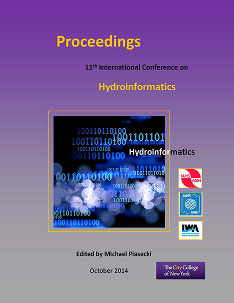Document Type
Presentation
Publication Date
8-1-2014
Abstract
Vulnerability assessment is a promising approach to identifying critical components of complex systems. In such systems, critical components could be crucial links and strategic locations for management and control. Managing those components better could, in turn, improve or reinforce a system’s resilience to shock events. However, fully comprehensive vulnerability assessments cannot be guaranteed as enumerating all possible shock events in complex systems is computationally intensive and almost infeasible. Consequently, the important role of some components might be neglected. This paper explores the feasibility of using a dual approach vulnerability assessment for water distribution systems (WDSs). Specifically, complex network analysis (e.g. community detection) and control-theory-based analysis (e.g. controllability analysis) is utilized to identify critical components within WDSs. A real-world benchmark water distribution system is mapped into either undirected or directed graphs by identifying critical pipes and nodes respectively. Here, critical links refer to pipes linking all the subsystems of a WDS together. Critical nodes are defined as actuators based on analogy with control theory. Controlling a suitable set of actuators by different signals can offer full control over a dynamical system. The results from the two different methods are discussed with respect to the criticality of the identified components to water supply during failure, and the correlations among the alternative approaches. It is concluded that, although there is a much larger number of actuators, about 77% of critical links are also identified as actuator pipes (pipes with either of its end points as actuators) and therefore they have the same criticality. For the remaining 23%, the location of critical links is rather close to that of actuators despite differences in criticality. Further study is ongoing to confirm whether any other actuators unexplored in this study could be more critical than the studied actuators and critical links or not. Further, a variety of failures will be compared using the two methods.



Comments
Session R56, Water Distribution Networks: Infrastructure Health